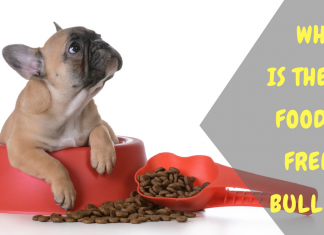Welcoming a new puppy into your home is an exciting journey filled with playful antics and heartwarming moments. As you embark on this adventure, one of the most essential aspects to consider is your puppy’s nutrition. Ensuring that your furry friend receives the right amount of food at the right times is crucial for their growth, health, and happiness. In this comprehensive guide, we’ll walk you through the ins and outs of feeding your puppy, offering expert advice on how much to feed and how often. With a warm and caring approach, we’ll help you navigate the world of puppy nutrition, setting the foundation for a lifetime of wagging tails and joyful companionship.
Choosing the Right Puppy Food for Your Furry Friend
When it comes to selecting the perfect food for your little canine companion, it’s essential to consider a few key factors to ensure they receive the nutrients necessary for their growth and well-being. Puppies have different dietary needs than adult dogs, requiring higher levels of protein, fats, and certain vitamins and minerals. Start by looking for puppy-specific formulas that are rich in high-quality ingredients and avoid those with artificial additives or fillers. It’s also crucial to check for the Association of American Feed Control Officials (AAFCO) approval, which ensures the food meets the standard nutritional requirements.
Here are some tips to help you make the best choice:
- Consider your puppy’s breed and size: Large breeds have different nutritional needs compared to smaller ones.
- Check the ingredients list: Look for whole proteins like chicken or lamb as the first ingredient.
- Pay attention to your puppy’s preferences: Some pups may prefer wet food over dry, or vice versa.
- Consult your veterinarian: They can provide guidance tailored to your puppy’s specific health needs.

Understanding Portion Sizes for Different Breeds and Ages
When it comes to feeding your puppy, understanding portion sizes is crucial for their health and development. Different breeds and ages have unique nutritional requirements, so it’s essential to tailor your puppy’s diet accordingly. Smaller breeds, such as Chihuahuas and Pomeranians, typically need smaller portion sizes but may require more frequent meals due to their fast metabolism. In contrast, larger breeds, like Great Danes and Saint Bernards, require larger portions to support their rapid growth, but overfeeding can lead to obesity and joint issues.
- Young puppies (8-12 weeks): Offer small, frequent meals throughout the day, about four times daily, to keep their energy levels stable.
- 3-6 months old: Reduce feedings to three times a day as their digestive system matures.
- 6-12 months old: Transition to two meals per day, adjusting portion sizes as necessary to maintain a healthy weight.
Always consider your puppy’s activity level, as more active pups might require additional calories. Consult your veterinarian to ensure you’re meeting your puppy’s specific dietary needs and monitor their growth to adjust portions accordingly.

Creating a Consistent Feeding Schedule for Happy Tummies
Establishing a regular feeding routine is essential for your puppy’s growth and overall well-being. Puppies thrive on predictability, and a consistent schedule helps regulate their digestive system, ensuring they absorb all the necessary nutrients. Aim to feed your little one at the same times every day, which can also aid in house-training as their potty schedule becomes more predictable. Remember, young pups have small stomachs and high energy needs, so multiple feedings throughout the day are crucial.
- For puppies aged 6-12 weeks: Offer food 4 times a day.
- For puppies aged 3-6 months: Transition to 3 meals daily.
- For puppies aged 6-12 months: Reduce to 2 meals per day.
Monitor your puppy’s body condition and adjust the portions as needed, but always consult your vet for personalized advice. A happy tummy leads to a happy puppy, so keep those meals regular and balanced!

Recognizing Signs of Overfeeding or Underfeeding
Ensuring your puppy is getting the right amount of food is crucial for their development, but it can sometimes be tricky to strike the right balance. Signs of overfeeding include rapid weight gain, lethargy, and excessive body fat. If your puppy seems to be moving sluggishly or has a noticeable layer of fat over their ribs, it might be time to reassess their portion sizes. Other indicators are loose stools or digestive discomfort, as an overloaded digestive system can struggle to process too much food.
Conversely, underfeeding can leave your puppy with visible ribs, a lack of energy, and stunted growth. If your puppy is constantly begging for food or appears unusually skinny, these could be signs they aren’t getting enough nutrition. Watch for dry or dull fur and a general sense of weakness, as these may also indicate a need for more sustenance. Regularly monitor their weight and body condition, and adjust their meals accordingly to ensure a balanced diet that supports their growth and energy levels.















